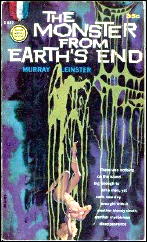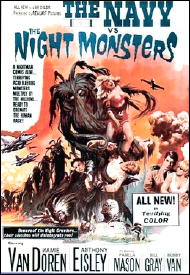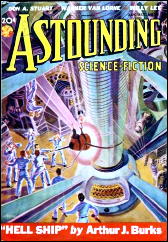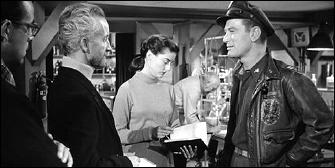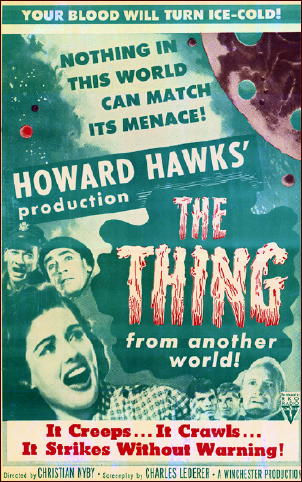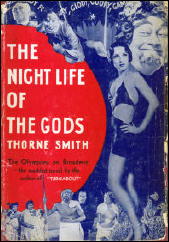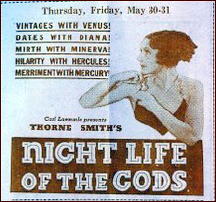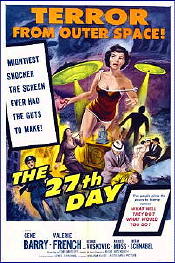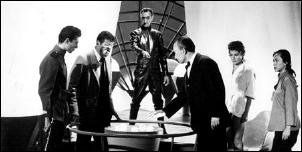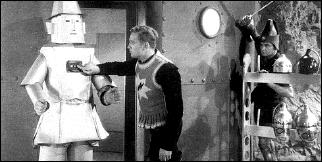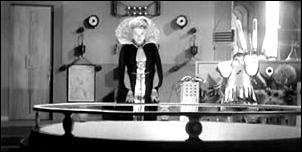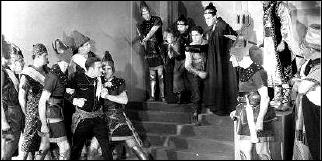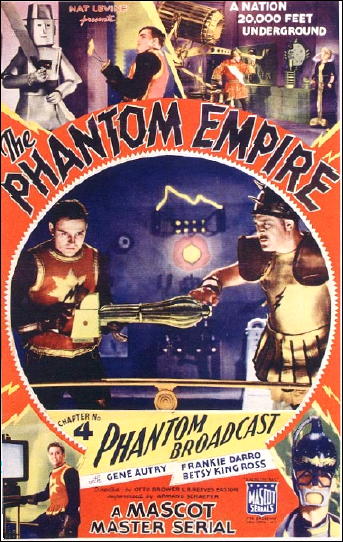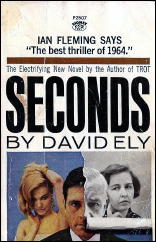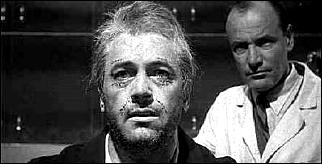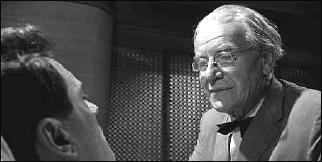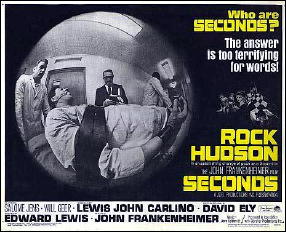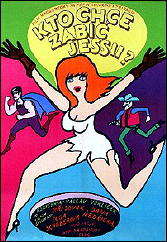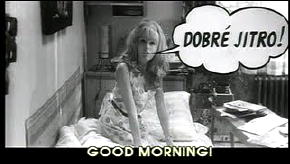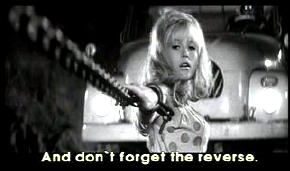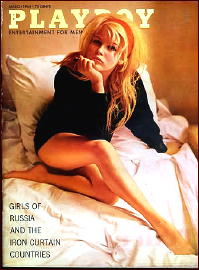Sun 14 Feb 2010
An SF Movie Review by Mike Tooney: FORBIDDEN PLANET (1956).
Posted by Steve under Reviews , SF & Fantasy films[5] Comments
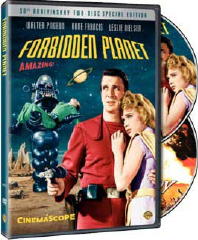
FORBIDDEN PLANET. Metro-Goldwyn-Mayer, 1956. Walter Pidgeon, Anne Francis, Leslie Nielsen, Warren Stevens, Jack Kelly, Richard Anderson, Earl Holliman, George Wallace, James Drury, Robby the Robot. Screenplay: Cyril Hume. Story (credited): Irving Block and Allen Adler; (uncredited): Bill Shakespeare and Arthur Conan Doyle. Director: Fred McLeod Wilcox.
As the deep space cruiser C-57D approaches the planet Altair 4, the captain, J. J. Adams (Leslie Nielsen), receives a radio message from Dr. Edward Morbius (Walter Pidgeon) not to land; but Morbius offers no explanation valid enough for Adams to leave, so he sets his ship down.
The main reason the C-57D has come to Altair 4 is to determine the fate of another spaceship, the Bellerophon. Morbius’ account of what happened to the Bellerophon — that it was destroyed by some unknown force while attempting an ill-advised takeoff, killing everyone except Morbius, his wife (who later died), and his daughter — just doesn’t ring true to Adams’ skeptical ears, and he decides to investigate further.
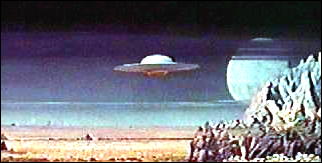
It isn’t long before this “unknown force” is roaming abroad once more. It leaves deep footprints in the sand, warps thick metal steps, and makes salsa of the ship’s communications officer. Eventually it reveals itself in a frontal assault on the C-57D, “as big as a house” and able to absorb billions of volts of plasma energy from the ship’s heavy weapons.
However, as Commander Adams won’t learn until it’s almost too late, the murderous thing he has just fought against isn’t really the one who destroyed the Bellerophon. No, the killer he’s seeking is all too human ….
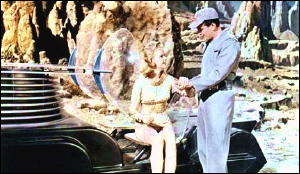
So much has already been written about Forbidden Planet that I won’t waste any time on the great visual effects (including Anne Francis), the mind-boggling concepts (such as the Krell and their Great Machine), the unique musical score, or the leaden direction.
Instead, let’s very briefly explore the notion that Forbidden Planet is a detective film, much like Them! (reviewed earlier here ), with Sherlockian overtones.
Not only are the wonders of the Krell civilization revealed to Adams, the ship’s doctor (Warren Stevens), and his exec (Jack Kelly), but these marvels have the practical effect of being diversions that take their attention away from the true killer.
Like Sherlock Holmes, however, Adams never loses sight of his mission: to determine what happened to the previous expedition, despite all the razzle dazzle. Much like that legendary Hound haunting the moors of western England, there is a serial killer loose on Altair 4, and Adams aims to catch him.
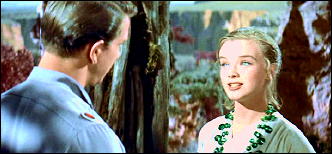
At every opportunity, Adams returns to the Bellerophon’s fate. Each time the monster goes on the prowl, it confirms his convictions that, despite every obvious indication, people have died due to a human agency, one that is beset by human foibles like fear and jealousy and pride — and since there are only two humans presently living on Altair 4, Adams must choose between someone he admires and someone he loves.
So what we have here — Robby the seemingly harmless robot, an analogue of a certain family retainer; a rampaging monster not dissimilar to the Hound of the Baskervilles; and a monomaniacal scientist ostensibly absorbed with his studies, the Krell this time instead of butterflies on Grimpen Mire — are all familiar elements of detective fiction that in the past usefully served a certain Scottish mystery author as both plot developments and red herrings.
Therefore, in conclusion it’s possible to view Forbidden Planet as more than a sci-fi movie. It just might be the most intellectually stimulating detective film of all time.
Or maybe not. You decide.
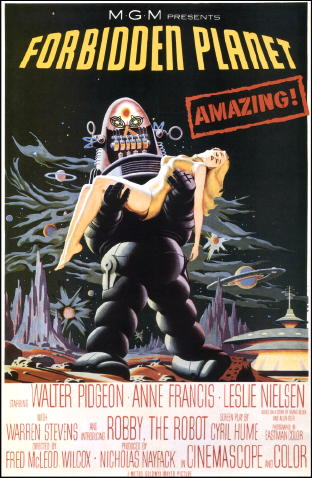
Note: Forbidden Planet is scheduled for broadcast on TCM Friday, February 19th.





